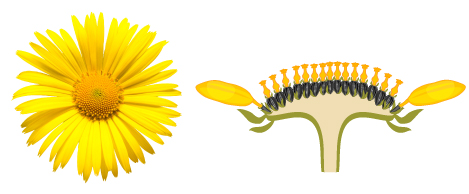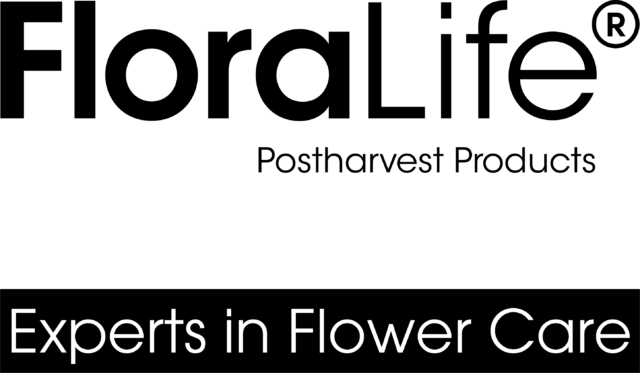Chrysanthemums (Pompons): The Humble Flower with a Hidden Secret!
LivRio Magazine March 2021, powered by FloraLife

Pompons AKA cushions, buttons, chrysanths, or daisies are an often underappreciated staple of the floral industry. These versatile little beauties are highly reliable thanks to their long vase life, ability to store well, and year-round availability in a wide variety of shapes, sizes and colors.
But you may be surprised to hear that from the cheery daisies to the many petaled cushions, every Chrysanthemum keeps the same secret.
Are you intrigued yet? Prepare to be amazed…
Did you know that each chrysanthemum’s bloom is actually made up of a collection of many tiny flowers?
It is best explained in the pictures below. On the left, you see a front view of a yellow daisy. On the right is the same flower but shown as a cross section where you can see sixteen individual flowers! That’s right, each individual petal is actually a flower called a ray flower/floret. The structures in the center are called disk flowers/florets and those are also small individual flowers.

Now you know the chrysanthemum’s secret, you may never look at this humble flower in the same light again. And as a bonus you can now amaze your friends, family, and colleagues with your newfound botanical knowledge.
Looking for a versatile flower for Easter or Spring arrangements? Chrysanthemums are the perfect choice! With such a long vase life, they can be placed in arrangements along with greenery ahead of time in pre-production. Also, with the many blooms found on each stem, you can make a little bit look like a lot by using just a couple of stems.
Chrysants come in a variety of beautiful spring pastel colors. However, if you need a flower outside of nature’s color palette, they offer the perfect base onto which to add a spray of water-based color. So even in a pinch you can make a white chrysanthemum any color you desire.
Purchasing
- Choose stems with blooms showing full color, and ¾ to fully open.
Hydration after Harvest
- Start processing with a clean bucket, sanitized with a floral cleaner such as FloraLife® D.C.D.® Cleaner.
- Remove any leaves that would be below the hydration solution.
- Cut stems about 1 inch before placing in a hydration solution such as FloraLife® HydraFlor® 100.
- Hydrate in chilled solution in the flower cooler (34 – 38° F/ 1 – 3° C).
- Limit the time between harvest and placing in the cooler to less than one hour.
Shipping and Storage
- Shipping and storage temperatures should be at 34 – 38° F / 1 – 3° C.
- Dry storage is best, but only if temperatures are maintained between 34 to 38F / 1 – 3° C.
Re-hydration at Store Level and Storage
- Store flowers dry at 34 to 38F / 1 – 3° C for as long as possible (until flowers are needed for wet case display at store/wholesale level).
- Start processing with a clean bucket, sanitized with a floral cleaner such as FloraLife® D.C.D.® cleaner.
- If received dry packed, conditioning of stem ends is recommended to prevent blockage and promote uptake. Cut approximately 1” or more off stems. Use clean, sanitized clippers or knife, and treat with FloraLife® Quick Dip.
- Place flowers in a holding treatment such as FloraLife® Express 200. Do not put flowers directly in metal/galvanized buckets. Use clean, high quality water that has not been treated with a water softener as the salt levels can be damaging to flowers.
- Store in a cooler at 34 – 38° F / 1 – 3° C with relative humidity of 75-85%.
- Allow minimum 2 hours to hydrate placing buckets in an area with good airflow.
- Always remember FIFO (first in/first out) when rotating Pompons or any other flowers.
Vase Care
- Remove any leaves that might be below the vase solution.
- If flowers are dry packed, cut approximately 1” or more off stems. Use clean, sanitized clippers or knife, and treat with FloraLife® Quick Dip.
- Immediately place flowers in vase solutions containing FloraLife Crystal Clear® or FloraLife® Express 300.
Common Defects
- Botrytis can develop in blooms. Always maintain the correct temperature and humidity levels during storage.
- Flower shattering due to rough handling
- Foliage yellowing
- Foliage browning
- Dehydration
To learn about best practices from the experts in flower care or to inquire about products and availability in your region, visit www.floralife.com or contact your local FloraLife representative.
*Product availability depends upon geographical region
